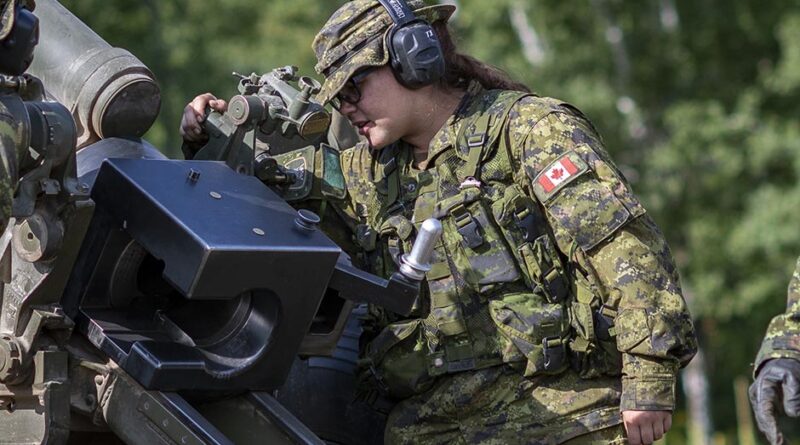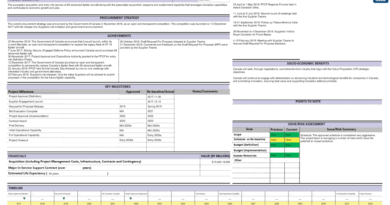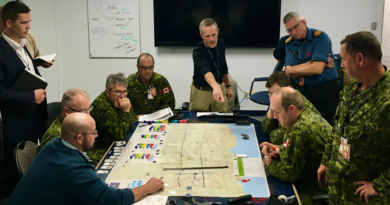‘Within our control’ – The Value of the Primary Reserve
By Meaghan Setter
It seems to be in vogue these days to blame the federal government for all our ills, whether as an individual or an institution. A recent example are the remarks by Lieutenant-General (retired) Michel Maisonneuve published in the National Post regarding the state of the Primary Reserve (Neglected reserves highlight the dire state of our military). He concludes his article with, “It is time for the Canadian government to give our indispensable reserves stable funding and respect.”
Each person has the privilege to hold politicians and their government accountable. And the spotlight on the Primary Reserve should be applauded because its issues are real and not separate from those of the Regular Force. The Canadian Armed Forces (CAF) does not equate to the Regular Force, which is then supplemented by the Reserve Force. The CAF consists of all its members, regular and reserve. And the CAF needs to be held to account for the decisions it made. Decisions that have resulted in the state of the Primary Reserve today.
First, there are a few inaccuracies that should be corrected. The CAF is entirely a volunteer force, not just its Primary Reserve. Canada does not conscript, instead, Canadians volunteer to enrol in either the Regular or the Reserve Force. Primary Reservists do mainly contribute their service part-time, in addition to their various other civilian obligations, but there is legislation across Canada that allows reservists time away from their civilian employment for military training and deployments (Legislated military leave for reservists). There is also a cadre of Primary reservists that serve full-time in several capacities beyond that for international and domestic operations. And when asked, many reservists will agree that the Primary Reserve is a ‘poor sibling’ to the Regular Force. But let’s be clear, this is mainly the outcome of CAF decisions made over the years.
There is frequently tension between militaries and governments when it comes to resources. There is always opportunity for advanced equipment, more personnel or better training in addition to regular life-cycle management. However, a state must balance all its competing demands. Recent polls have indicated that Canadians would like to see more spent on the CAF. The world is filled with uncertainty right now and people want to feel safer. However, the polls don’t usually ask Canadians what they would give up to spend more on the military. Government spending is a zero-sum game. In today’s fiscal environment, the reality is it is a deficit game and spending more in one area without offsetting it from another will only make the situation worse. Economic security is as important as physical security.
But it is also a choice to take what is given and continue as if there was more. Money for the Primary Reserve is better protected now, set in a specific funding code that limits the ability for it to be used for anything else. It was not always that way but changed for the fiscal year 2016-2017 after an Auditor General report made a recommendation regarding the sustainability of Army Reserve units. Until then, money nominally allocated for Reserve pay and activities would often be used for other purposes. The same report also identified equipment shortfalls. Funding and equipment deficiencies in the Primary Reserve were deliberate decisions made by CAF leadership to offset what were perceived as shortages in other areas. These were not choices dictated by government.
Some may argue that it is the government’s fault for not providing ‘what is needed’ yet still expecting results. CAF members were once known for their ‘can-do’ attitude, their ingenuity and competence to overcome challenges. At some point that became ‘can’t fail’, a sign of potential organizational decay. That the CAF didn’t fail is a testimony to the efforts of its members, but the extraordinary demands over a long, drawn-out period hollowed out the force. Decisions not made or made in service to a desired image without critical reflection led to the CAF’s current reality. This was true before COVID, true regardless of which party was in power.
LGen (ret’d) Maisonneuve laments that Primary Reservists join to sail, train and fly but these activities are reduced now due to funding. However, the reduced activities are based on CAF leadership choices and their priorities. People join for many reasons, and it is a generalization to narrow motivation down to operational tasks. The bottom line is that people are inspired by a sense of purpose and stay when they feel their efforts are valued and contribute to that purpose. That purpose needs to be defined beyond the 30,000 number that represents a calculation, not people; allocated training days disconnected from task loads; or even mission tasks. What purpose does Canada want its Primary Reserve to fulfil?
Those who serve part-time, whether that is a few hours a week or several months a year, have been characterized at times as less committed. After all, they only deploy if they choose to; they decide where they live rather than the CAF moving them where the organization has a need; and while trained to the same standard, that capacity does not have the same depth of experience and is not available at a moment’s notice. Instead, according to CAF data from February 2023, the average Primary Reservist contributes ten or more hours weekly to the CAF in addition to having a full work week of civilian employment or school obligations in their community. They occasionally move but often stay in one place, forging deep relationships locally while serving five to ten years with the CAF. And if there were ten primary reservists in a room, five of them would have deployed at least once in their career, with one or two deploying each year on domestic operations. They work hard. They stick around. They show up.
Primary Reservists can also bring unique perspectives, different skills and built-in networks with civil society. Rather than limiting the Primary Reserve to an industrial reserve force concept from last century, let’s define what is needed today. The Primary Reserve is not ‘lesser than’ the Regular Force, it simply is different. Let’s determine what that diversity of experience and thought can bring to the CAF to advance its outcomes, further its competitive advantage – not just as more of what is already resident in the CAF or capabilities no one else wants to sustain, but for a purpose that speaks to the value of the Primary Reserve.
These are decisions that are largely within CAF leadership’s purview to make. The CAF is responsible for stewarding itself as an institution, for its evolution as the environment and strategic circumstances shift. It is not good enough to blame lack of government funding, to shift accountability. We can do better. For the Primary Reserve and for Canada.
Colonel Setter is a Primary Reserve officer of the Canadian Armed Forces, currently attending the National Security Program. This work is the sole opinion of the author and does not necessarily represent the views of the Canadian Armed Forces, the Canadian Department of National Defence, or any department or agency of Canada. The author may be contacted by webmail at RUSI(NS).




